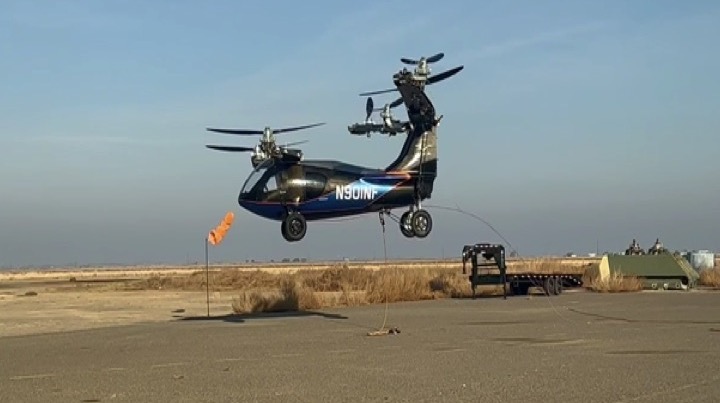|
Getting your Trinity Audio player ready...
|
ASKA is working with East Japan Railway Company (JR East) to explore the possibilities of implementing the ASKA A5 roadable electric-hybrid VTOL aircraft in society, while aiming to realize sustainable urban development and tourism services using flying cars.
Under this collaboration, the companies are set to display a one-third-size model of the ASKA A5 aircraft at TAKANAWA GATEWAY CITY, which will open on March 27th in Japan. ASKA and JR East will also present a video envisioning a future tourism experience utilizing flying cars in Japan at the event.

The ASKA A5 is a four-seater (one pilot, three passengers), electric-hybrid flying car with vertical takeoff and landing (VTOL) and short takeoff and landing (STOL) capabilities. Equipped with a plug-in hybrid system that uses existing EV chargers, it offers a maximum flight range of 250 miles.
With the wings folded, the vehicle becomes the size of an SUV and can travel on the road, utilizing the existing infrastructure for charging, fueling, and parking. Beyond tourism, the ASKA A5 is expected to be useful for emergency transportation during disasters, with the advantage of requiring minimal infrastructure as well as offering last mile transportation.
The full-scale prototype has achieved a Certificate of Waiver or Authorization (COA), and in July 2024, received its second renewal of the FAA’s experimental special airworthiness certificate for R&D. The aircraft is progressing with flight testing, having successfully completed over 500 unmanned hovering tests as well as extensive drive testing.
Designed to integrate seamlessly with existing infrastructure, such as EV charging stations, airfields, helipads, and runways, the ASKA A5 can operate effectively within the modern transportation ecosystem.
TAKANAWA GATEWAY CITY is a large-scale urban development project in Tokyo that began with the opening of Takanawa Gateway Station in 2020. Strategically positioned between Shinagawa and Tamachi stations, the station was designed to serve as the centerpiece of a larger redevelopment effort. Its concept is to transform the former station into a dynamic, future-thinking hub that integrates state-of-the-art technology, sustainable architecture, and cultural heritage.


